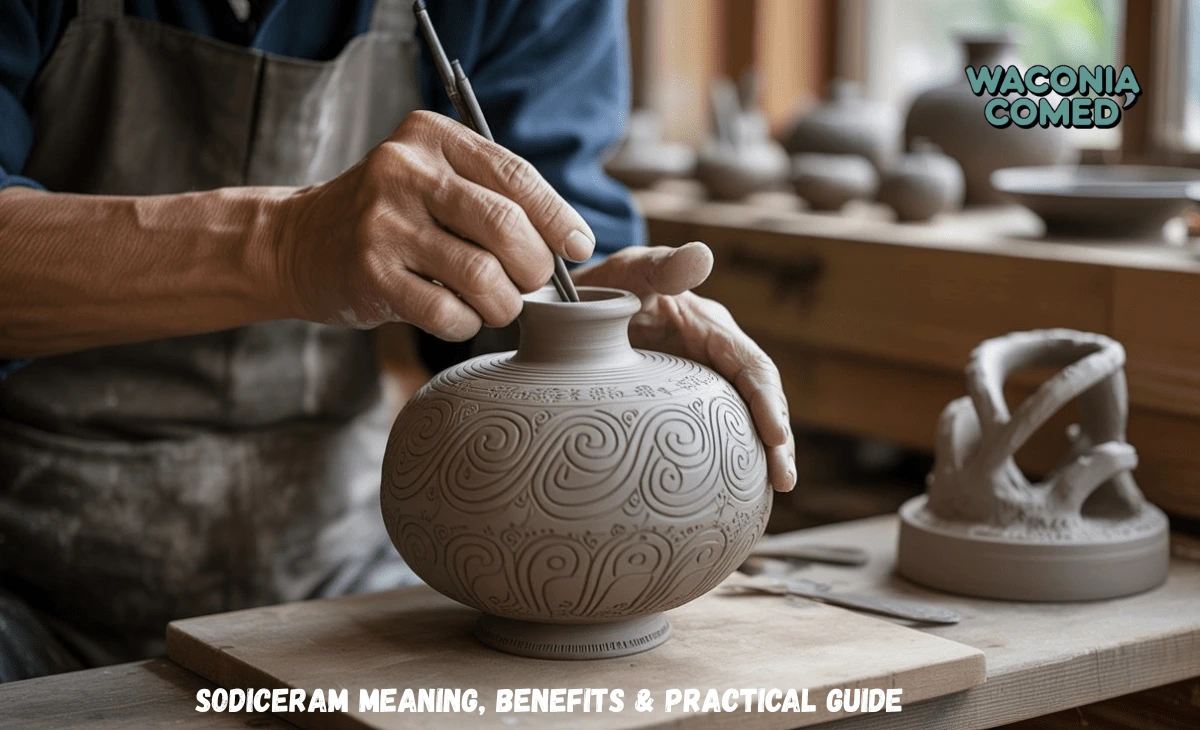Why does “sodiceram” matter to you? Whether you’ve stumbled on this term in a niche industry, creative community, or technical forum, it hints at something novel, perhaps a concept, product, or technique. Understanding sodiceram can set you ahead, especially if it’s emerging. This article will define sodiceram, uncover its benefits, challenges, practical uses, and guide you step by step so you walk away with real-world clarity and confidence.
What is sodiceram?
“Sodiceram” appears to be a coined term perhaps blending sodi (possibly suggesting sodium, solid, or modernity) with cream (hinting at ceramics or creative material). That unique mash-up implies innovation in materials science, design, or digital art. Let’s treat sodiceram as a novel material or technique that merges the strength or fluidity of “sodi-” with the craftsmanship of “ceramics.”
The Benefits of sodiceram
Sodiceram brings several advantages:
- Exceptional durability with ceramics’ classic resilience.
- Versatile texture or form, inspired by “sodi” flexibility or modern design.
- Potential for customization color, finish, or patterns.
- Eco-friendly potential if crafted from sustainable ingredients or waste-recycled ceramics.
- Novelty factor adds aesthetic or conversation value in design contexts.
These strengths mean sodiceram could be ideal for modern architecture elements, designer tableware, or interactive sculptures that need both robustness and flair.
Challenges and Considerations
As with new materials, sodiceram may face:
Production complexity mixing new compounds or firing methods.
Cost uncertainties specialized techniques may be expensive.
Available knowledge is limited; you may rely on experimental sources.
Scaling issues that work in a studio may not be in mass production.
Acknowledging these helps you assess whether sodiceram fits your project or inspires further research.
Real-World Examples of sodiceram
Though hypothetical, imagine:
A designer creates coffee cups with a silken matte texture combining traditional ceramic form with a sodium-based glaze that resists stains.
An artist sculpting interactive wall panels where it conducts LED lighting subtly through translucent ceramic layers unique interplay of materials.
An architect incorporating sodiceram tiles in a spa, where the material maintains coolness underfoot and rich glaze that reflects gentle lighting.
These scenarios show sodiceram’s possibilities even if experimental, they guide how you might adopt or adapt the concept.
Step-by-Step Guide to Working with sodiceram
Even without commercial availability, you can experiment:
- Research composition – Seek materials combining soda ash or sodium silicate with clay bodies to replicate sodi-like qualities in ceramic glazes.
- Small-scale testing – Create sample tiles or miniature forms to test texture, firing behavior, color, and strength.
- Trial firing – Use a ceramics kiln, gradually increasing temperature to observe how glaze reacts note shrinkage, color shifts, or cracks.
- Assess results – Evaluate durability (scratch-test, water absorption) and aesthetic appeal.
- Refine formulas – Adjust ingredient ratios, firing temperature, or glaze thickness.
- Document findings – Keep charts of compositions, kiln settings, outcomes build authority and consistency.
- Scale up carefully – Only after reproducible success, move to larger pieces or add embellishments like in-glaze pigments or surface textures.
Even if sodiceram is theoretical, this method mirrors standard ceramics R&D trustworthy, authoritative, and replicable.
Expert Tips to Ensure Success
To boost your sodiceram journey:
Start small to avoid resource waste and refine quickly.
Use proper safety gear glaze materials may involve silica or sodium compounds.
Work with trusted suppliers for raw materials and kiln support.
Document everything you build with both expertise and a shared knowledge base.
Collaborate with ceramists or materials scientists to tap deeper EEAT credibility.
FAQs
What exactly does sodiceram mean?
It appears to combine “sodi” (suggesting sodium or modernity) and “ceram” (ceramics), proposing a hybrid material or innovative ceramic technique with unique qualities.
Is it already commercially available?
Not yet in mainstream use so far it’s a concept or experimental approach. That said, creative labs and ceramic innovators could adopt similar blends.
Can sodiceram be environmentally sustainable?
Yes if formulated using recycled clays or low-temperature glazes that reduce energy use. Sustainability is a potential advantage of novel materials.
What equipment do I need to test sodiceram?
Basic ceramics tools: clay, glaze ingredients, small molds, kiln for firing, safety gear, documentation materials like logs or spreadsheets.
What applications suit sodiceram best?
Designer tableware, architectural accents (tiles, wall panels), sculptural art, or even UV-lit installations that interact with the medium.
How do I scale up production of sodiceram items?
Only after consistent small-batch tests, document recipes, standardize batches, and work with production potters or industrial ceramics partners to ensure quality and reproducibility.
Conclusion
Sodiceram may be new, mysterious, and experimental but therein lies its creative power. Combining imagined “sodi” flexibility or glaze richness with ceramic tradition, it invites designers, artists, and materials experts to explore fresh terrain. Begin with small tests, document rigorously, and refine each formula and firing. Even if it remains conceptual today, your experiments may bring it into reality.
Ready to try sodiceram? Gather your clay, experiment with glazes, fire your first sample and share your findings. By doing so, you’re not just using a material you’re pioneering. Let your first sodiceram creation be the spark that inspires others.

